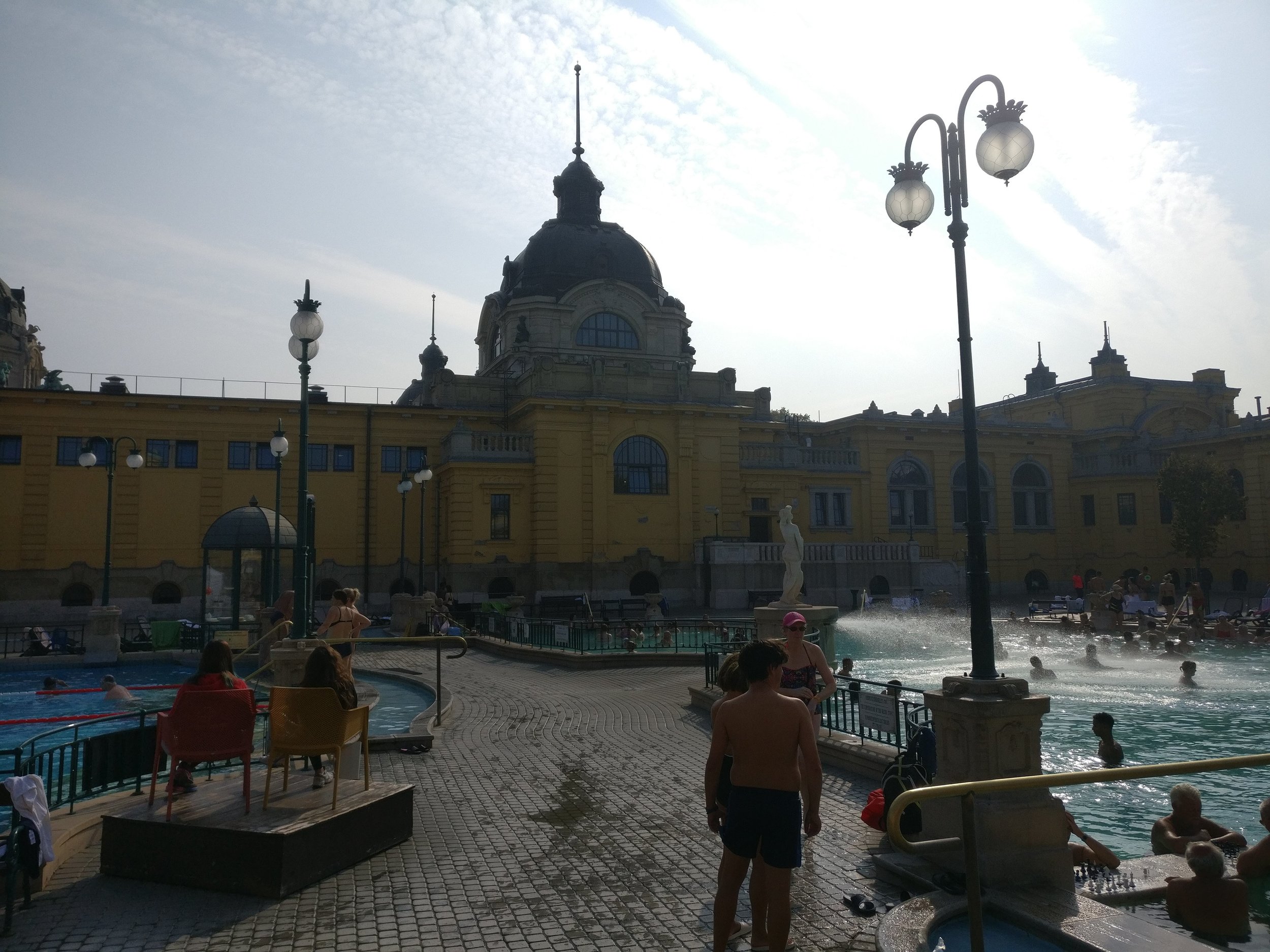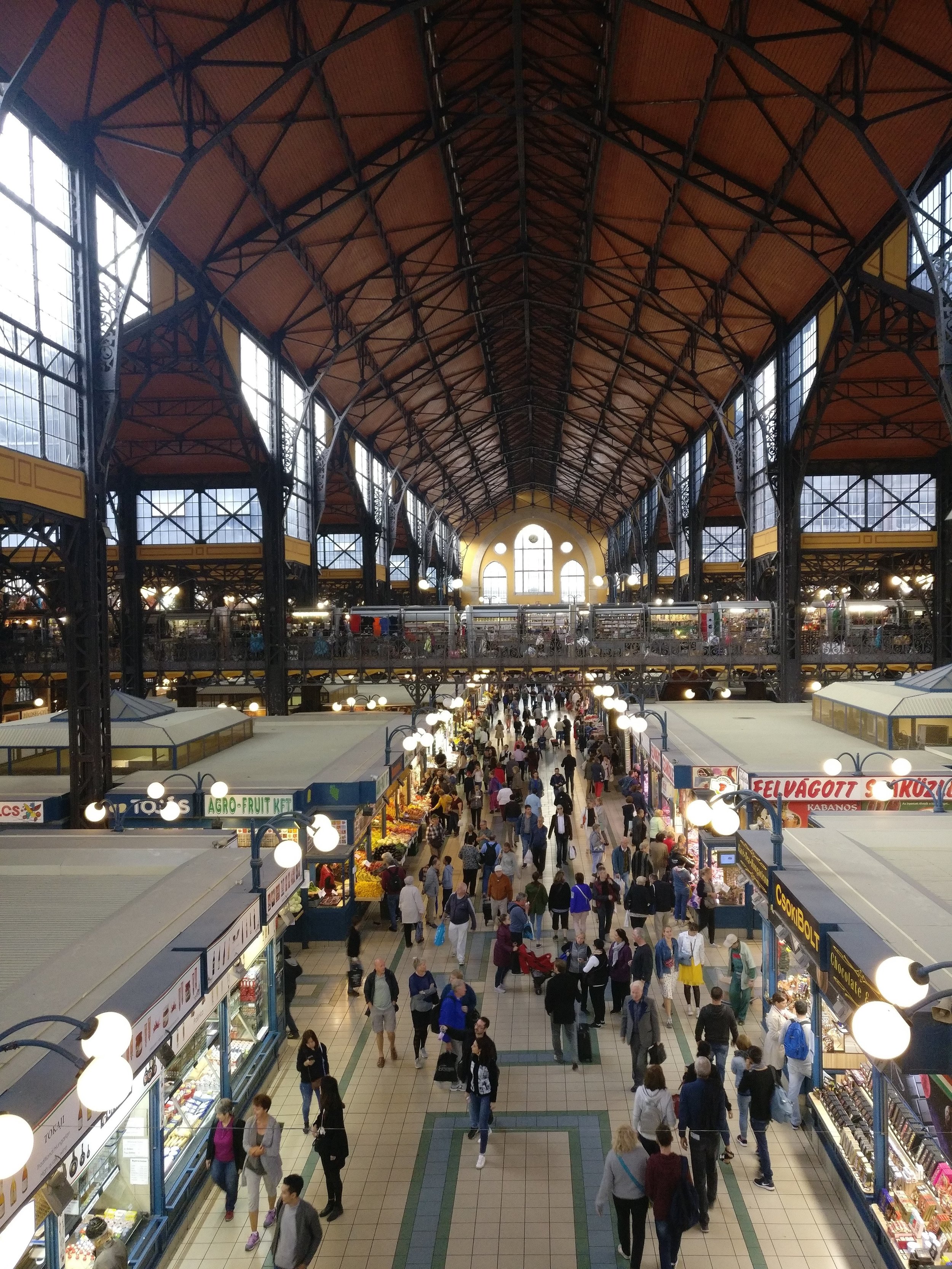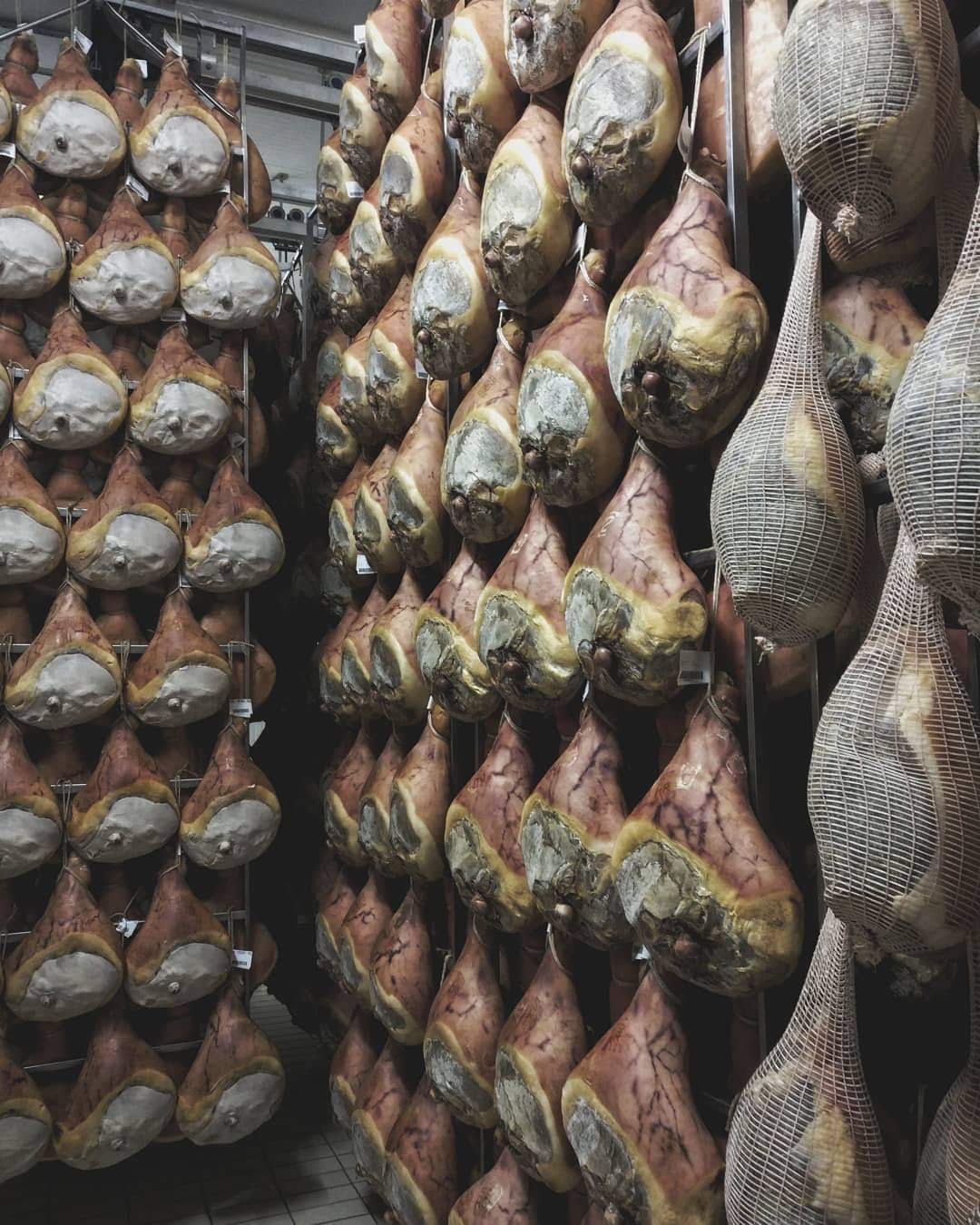From wikipedia
“There is no single accepted English term for fil or filmjölk. Fil and/or filmjölk has been translated to English as sour milk, soured milk, acidulated milk, fermented milk, and curdled milk, all of which are nearly synonymous and describe filmjölk but do not differentiate filmjölk from other types of soured/fermented milk. Filmjölk has also been described as viscous fermented milk and viscous mesophilic fermented milk. Furthermore, articles written in English can be found that use the Swedish term filmjölk as well as the Anglicized spellings filmjölk, fil mjölk and fil mjolk.”
Often Fil is wrongly called Buttermilk, even by us in some video, its fermented milk. Buttermilk is something else, originally, buttermilk is referred to the liquid left over from churning butter from cultured or fermented cream.
Simply put, you take milk, put it on the counter in room temperature for 12-24 hours. The milk will turn thick, creamy and have a fresh sour taste and smell. Simplified, the bacteria eat the sugar in the milk and making it sour. You have made filmjölk, soured milk/fermented milk.
This is how it’s supposed to work, but unfortunately today it can be harder than this because of the milk quality and other factors that will attract the wrong kind of bacteria.
So now you know what Fil is, it’s simply fermented milk, continue reading if you want a deeper understanding of this
Filmjölk can be sort of compared with yoghurt, but they are made in different ways and have different bacteria culture.
Filmjölk are made with mesophilic bacteria, bacteria that flourish around 20 degrees Celsius, yoghurt are made with thermophilic bacteria that flourish around 45 degrees Celsius. For example, around the Mediterranean sea they have made yoghurt, why? because they have a warmer climate where the thermophilic bacteria thrive. In Sweden and other Nordic countries, we have made Fil, a colder climate where the mesophilic bacteria thrive.
You can make your Fil in two ways
Let the milks own bacteria and the surrounding bacteria do the job
Add pure, laboratory grown bacteria to the milk
So, like with other fermented food, the bacteria are key, and to get the bacteria we want we need a good product from the start.
A best-case scenario, you will have Raw milk from a farmer (or your own cows) that you know gives the cows the right food, have a healthy environment for the cows and have a good milking hygiene.
The right food means they eat grass, not massive amounts of grains. Nowadays hay-bales (silage) are the most common food for cows, that means you take the grass down and then put it into plastic, it will be wet and fermented in an airtight surrounding. It saves loads of time for the farmer and is totally fine for the cows to eat.
But, if you somehow have gotten dirt or manure inside that bale in that airtight environment, bacteria that you don’t want can flourish, like different strains of clostridium bacteria. If you make cheese this can cause butyric acid fermentation in the cheese, that means the cheese will blow up like a balloon and maybe explode. The taste can also be very bad. The very best would be if they ate fresh grass during summer and dried loose hay in the winter. The grass and herbs contain lots of natural good bacteria that will make your product, whatever you are making, a better and more alive one.
Healthy environment means that the cows are healthy, clean, can be outside, don’t stand around in their own poop for days end.
Good milking hygiene means that you milked your cows with clean hands and no poop or dirt falls into the milk. The very best here is also to milk the cow by hand, your hands combined with the natural bacteria flora in the surrounding makes the milk richer.
If you have this kind of milk you should be able to just put it in room temperature for 12-24 hours and see how it becomes. If it turns out tasting good and sour, it means you have a good milk that attracts, or already contain the right kind of bacteria, you can use this as your starter culture. Put in new milk, leave it on the counter and you will have new Fil the next day and so on. Always rely on your sense of smell and taste, if it tastes and smell good it probably is good, if it does not, don’t eat it and try again.
But this kind of good milk is rare today. In the old time, before all the man-made poisons, industrial waste, and the breeding of monster cows that produces way too much milk per cow than is healthy, everyone with a cow could much more easily produce a healthy, good tasting fil culture. The wild fil cultures made like this is also more long lived and diversified than the ones produced in the laboratory. There are stories of valued Fil-cultures passed on from generation to generation.
So, how can one make fil with modern, not so good milk, and what is the Långfil that we make and eat for breakfast?
It’s a Filmjölk with a string of bacteria that makes the Fil even more stretchy and viscous than the “regular” one. They have often made Långfil traditionally at the Fäbod, so somehow these strains of bacteria seem to like the Fäbod environment. Some say they use an herb called common butterwort (picked it a special time of year and smeared it into the wooden bowl they used) to make this kind of fil but other says it is a myth. The debate is ongoing.
We buy raw milk from our nearest farmer, he is organic but he still feeds his cows with grass from hay-bales (silage) and some grain. As a regular organic milk farmer, he has to do this to maximize the milk production in order to keep his enterprise economically viable. It is very hard in this political climate to be a food producer, so support your local farmer! This milk isn’t ideal, but, what we also know is that he takes care of his animals and that he and his family drinks the milk as it is, so until we have our own cows this works very well for us. And we are very grateful to have a (relatively) small milk producer in our village.
We have bought the bacteria for our Långfil at a cheesemaking shop that we have here in Sweden, but they don’t ship internationally as far as I understand. I have bought one package at a time of this culture but now they only sell a minimum of 10 packages of that one. Have to research if they have another one that works just as good. This is the one I’ve been using: Långfil culture at Kemikalia.
This shop from the US seems to have a kind of Filmjölk culture that I know taste good here, but it’s the regular Fil, not Långfil. Or this one here.
First, I make a starter culture
Heat milk and stir (One needs 1 dl culture per 1 liter of milk, so if you want to make 3 liters of Fil you will need 3 dl of starter culture, so start heating 3 dl of milk) for 10 minutes at 90 degrees Celsius. This process kills all the bacteria in the milk, even the good ones, and I will replace them with the bought one. Use a good thermometer.
Chill it to 24 degrees Celsius as fast as you can by putting the pot in cold water and stir
Add the bought bacteria, how much according to bag. Now I have ensured that the only bacteria in the milk is the bacteria strains that I want.
Put lid on and keep in room temperature for 12-24 hours, the added bacteria will multiply and start eating the milk sugar.
Remember that after the heating, the milk is “dead”, all the wild bacteria should have been killed, so you have to make sure it doesn’t get contaminated by anything since there is no bacteria left in the milk that can defend it. Use clean hands and tools!
Now we can use this starter culture to expand your Fil
Put the finished starter culture into fresh raw milk, you can warm the milk to about 20 degrees Celsius for a quicker start for the bacteria, and leave on the counter for 12-24 hours. Cloth over the opening. We don’t pre-warm the milk, we just add the starter culture to the cold milk and leave it in room temperature. It will take longer, but the result should be the same. Put it cold when ready.
Enjoy your fermented milk with perhaps some blueberries and a mixed in raw egg yolk for extra nutrients.
Remember to not eat it all! Save some for the next batch. We ad about 10% of fil to fresh milk whenever we need to make some more. So we save 4 dl of the fil in our 4 liter glass jars and pour fresh milk over that.
Sometimes I double check that the PH have been lowered with my Ph tool. I have this one, don’t know much about them, we had this one at school so I went for that one. You can also use PH meters for dirt from what I can understand, those are cheaper, or PH measurement strips.
Sometimes, after you have had your Fil culture for a while it can feel like the Fil have gotten not so sour or that it takes a longer time for it to be ready, this could mean that it isn’t enough of the good healthy Fil bacteria left, then you have to make a new starter culture. This is probably a consequence of the quality of the milk and the poor laboratory grown bacteria.
One alternative way to make fil, at least for people in the Nordic countries, is to go to the store, buy Filmjölk not older than 5 days (se packing date) and put some of it into fresh milk and leave it in room temperature. The bacteria will then multiply in the milk and it will become fil. Store bought milk should work, but it has been homogenized and pasteurized so the final result will not be as good and healthy, but it will technically become fil.
If you know someone that makes fil you can get a little from them as starter culture, also, cheesemakers use this kind of starter culture for their cheeses so possible you can also ask your local cheesemaker for some starter culture.
Think about:
If you have healthy animals, that eat what they are supposed to, some dirt in the milk isn’t dangerous, a healthy cow has healthy milk and the healthy milk have lots of good bacteria that protects the milk from some “bad ones”, of course if the “bad ones” outnumbers the good ones there is a problem.
Don’t use hand alcohol sanitizer before milking by hand, it kills bacteria, even the good ones.
Environmental poisons, whatever they may be, (leaking plastics, a species inappropriate diet, pesticides…) attracts the wrong kind of bacteria.
As it is today, we don’t know much about the world of bacteria, much yet to discover. But this is what I have been thought at my school.
When using the bought starter culture there are certain strains of bacteria in it, if you manage to make your own culture it will have a multitude of different kinds of strains, and therefore also may be an even healthier and long lived culture.
With a PH-meter or PH measurement strips you can control that your product is a safe one, a neutral PH is 7, so a lower number the sourer it is and therefor safe to consume. But of course, people have made these kinds of products long before these tools, so you can do without, if the fil tastes fresh and sour, it is fine. The problem can be that back in the days, the cows had more natural bacteria and better health because they ate what they were supposed to and there weren’t so much chemical poisons in nature. Also every famer had a few cows each so they knew them and their health in a better way, than a farmer with hundreds of cows. Just things to ponder about!
Tools that can be good to have:
Thermometer – so you know the milk has the right temperature
Ph-tester – so you definitely know that the PH have gone down, the bacteria working and making it sour, making sure that the product are a good one. There are more expensive tools, that we think is necessary if your intention is to start making a lot of different cultured milk products. There are also simple PH measurement strips that are cheaper.
Remember, this is how we do it and we have worked out a way that works for us. Now you have to do the same and make sure that your product is a good and safe one using the tools you have at hand.
For those of you living in America, you can use the website realmilk to read about unpasteurised milk and where to find it.
Happy fermenting!






























